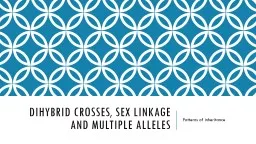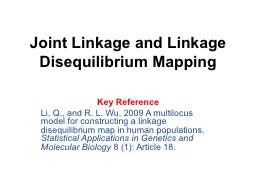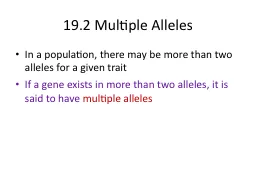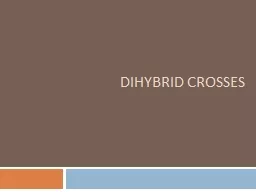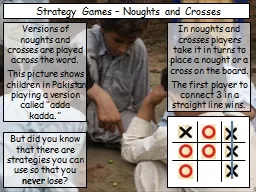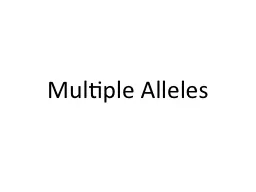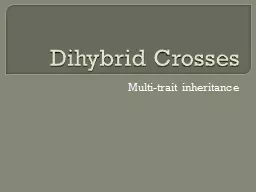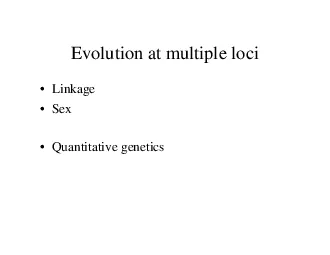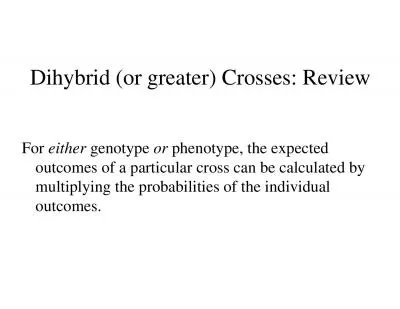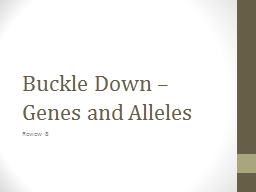PPT-Dihybrid crosses, sex linkage and multiple alleles
Author : alida-meadow | Published Date : 2017-04-30
Patterns of inheritance Learning outcomes i genetic diagrams to show patterns of inheritance To include monogenic inheritance dihybrid inheritance multiple
Presentation Embed Code
Download Presentation
Download Presentation The PPT/PDF document "Dihybrid crosses, sex linkage and multip..." is the property of its rightful owner. Permission is granted to download and print the materials on this website for personal, non-commercial use only, and to display it on your personal computer provided you do not modify the materials and that you retain all copyright notices contained in the materials. By downloading content from our website, you accept the terms of this agreement.
Dihybrid crosses, sex linkage and multiple alleles: Transcript
Download Rules Of Document
"Dihybrid crosses, sex linkage and multiple alleles"The content belongs to its owner. You may download and print it for personal use, without modification, and keep all copyright notices. By downloading, you agree to these terms.
Related Documents

